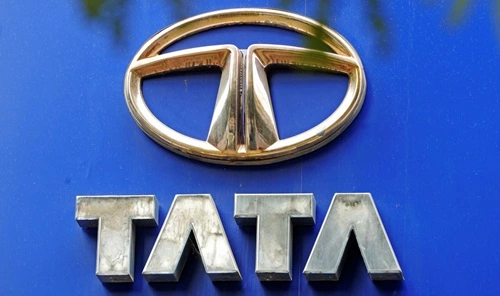Tata Motors, a part of the prestigious Tata Group, is one of India’s leading automobile manufacturers. Over the years, Tata Motors has made a significant impact both in the domestic and international markets with its wide range of vehicles, including passenger cars, commercial vehicles, and luxury automobiles under the Jaguar Land Rover (JLR) brand. In 2024, Tata Motors continues to navigate the complex and competitive automotive industry landscape. This SWOT analysis aims to provide an in-depth understanding of Tata Motors’ current position by examining its strengths, weaknesses, opportunities, and threats.

Current Overview of Tata Motors
Today, Tata Motors remains a dominant player in the Indian automotive market, with a strong portfolio that includes electric vehicles (EVs), SUVs, and commercial vehicles. The company’s global presence, bolstered by the acquisition of Jaguar Land Rover in 2008, allows it to compete in the luxury car segment and diversify its offerings. Tata Motors has been investing heavily in research and development (R&D) to stay ahead in innovation, particularly in the areas of electric mobility and connected car technologies. However, the company also faces challenges such as fluctuating market dynamics, intense competition, and the need to constantly adapt to changing consumer preferences.
Strengths
1. Strong Brand Reputation: Tata Motors benefits from being a part of the Tata Group, a name synonymous with trust and quality in India. This strong brand reputation has earned Tata Motors a loyal customer base and reinforced its position as a leading automaker.
2. Diverse Product Portfolio: Tata Motors offers a wide range of vehicles, from affordable passenger cars to luxury vehicles and commercial trucks. This diversity allows the company to cater to various market segments and customer needs.
3. Focus on Innovation: The company is committed to innovation, particularly in the development of electric vehicles and advanced technologies like autonomous driving and connected vehicles. Tata Motors’ investment in R&D is a key strength that positions it well for the future.
4. Global Presence: With manufacturing facilities and markets in several countries, Tata Motors has a strong global footprint. This international presence helps mitigate risks associated with reliance on a single market and provides access to diverse revenue streams.
5. Vertical Integration: Tata Motors benefits from vertical integration within the Tata Group, especially in areas like steel and automotive components. This integration provides cost advantages and streamlines the supply chain.
6. Strategic Acquisitions: The acquisition of Jaguar Land Rover (JLR) has expanded Tata Motors’ product offerings and given it access to luxury vehicle segments and advanced automotive technologies.
Weaknesses
1. Dependence on the Indian Market: A significant portion of Tata Motors’ revenue comes from the Indian market. This dependence makes the company vulnerable to economic fluctuations and regulatory changes in India.
2. Challenges with JLR: While JLR has provided access to the luxury market, it has also been a source of challenges, including declining sales in key markets and the need for substantial investment in EV technology.
3. Intense Competition: Tata Motors faces stiff competition from both domestic and international players like Maruti Suzuki, Hyundai, and Mahindra & Mahindra. This competition puts pressure on the company to continuously innovate and maintain its market share.
4. Quality and After-Sales Service Concerns: The company has faced criticism for the quality of some of its vehicles and its after-sales service. These issues, if not addressed, could harm Tata Motors’ brand reputation.
Opportunities
1. Growth in Electric Vehicle Market: With the global shift towards sustainability, the demand for electric vehicles is rising. Tata Motors has the opportunity to expand its EV portfolio and lead the market in India and other emerging markets.
2. Expansion in Emerging Markets: There is significant potential for Tata Motors to expand in emerging markets like Africa, Latin America, and Southeast Asia, where the demand for affordable and reliable vehicles is growing.
3. Technological Advancements: The automotive industry is rapidly evolving with advancements in connected and autonomous vehicles. Tata Motors can capitalize on these trends by integrating cutting-edge technologies into its vehicles.
4. Strengthening After-Sales Services: Improving after-sales services can enhance customer satisfaction and loyalty. Tata Motors has the opportunity to invest in its dealer network and customer support services to improve overall customer experience.
5. Strategic Partnerships: Collaborations with technology firms, battery manufacturers, or other automakers could accelerate Tata Motors’ innovation efforts and drive growth in new markets.
Threats
1. Economic Uncertainty: Economic downturns, both in India and globally, can negatively impact consumer spending on automobiles, affecting Tata Motors’ sales and profitability.
2. Regulatory Changes: Changes in environmental regulations, safety standards, and emission norms could increase operational costs and impact the company’s profitability.
3. Supply Chain Disruptions: Like many global automakers, Tata Motors is susceptible to supply chain disruptions caused by geopolitical tensions, natural disasters, or pandemics. Such disruptions can lead to production delays and increased costs.
4. Technological Disruption: The rapid pace of technological change in the automotive industry poses a threat to companies that fail to innovate quickly. Tata Motors must continuously invest in R&D to stay competitive.
Conclusion
Tata Motors is well-positioned to capitalize on the growing demand for electric vehicles and the expansion of emerging markets. However, the company must address its dependence on the Indian market, improve after-sales services, and overcome the challenges associated with Jaguar Land Rover. By leveraging its strengths and seizing new opportunities, Tata Motors can continue to thrive in the competitive global automotive industry. However, the company must remain vigilant in navigating threats such as economic uncertainty, regulatory changes, and supply chain disruptions.